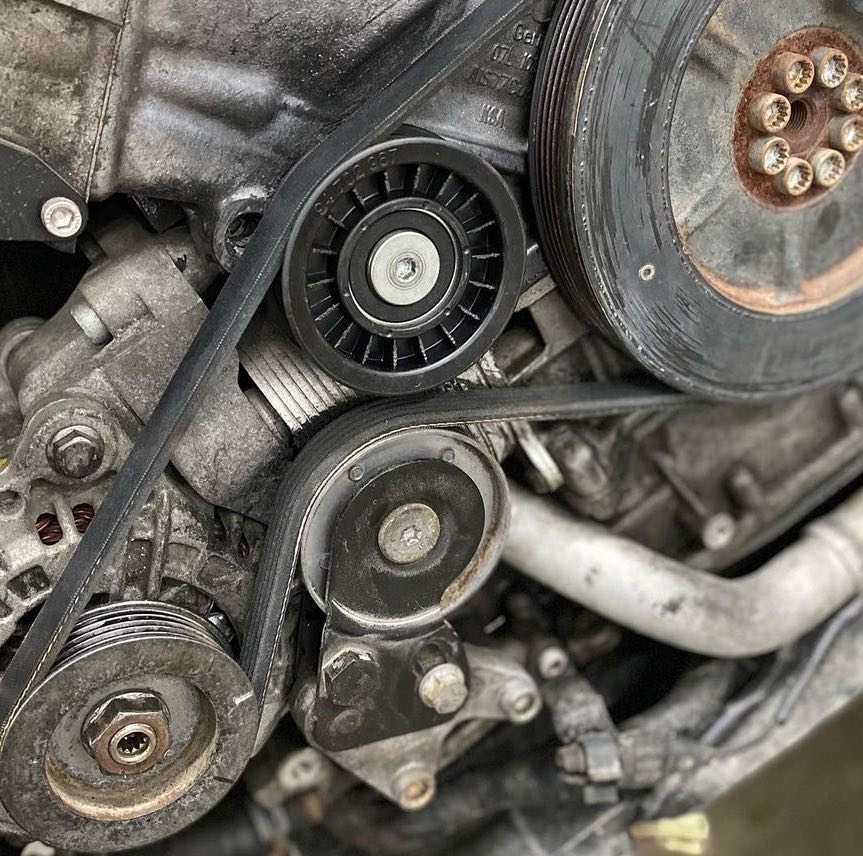The engine in your vehicle is an incredibly complex and finely tuned machine that requires all its components to work together in perfect harmony for it to function properly. One of the most critical parts of the engine is the idler pulley, which helps regulate tension on the drive belts. As one of the most used components, it is important to understand how a bad idler pulley can cause problems and what you can do to diagnose and repair it. In this article, we will discuss what symptoms are caused by a bad idler pulley, how to diagnose it, and what procedures are required to repair or replace it. By understanding these issues, you can ensure your car is running smoothly for years!
What Is an Idler Pulley?

Signs and Symptoms of a Bad Idler Pulley
A bad idler pulley can cause several issues for your vehicle. The most common signs and symptoms of a faulty idler pulley include excessive noise, belt squealing, belt slipping or breaking, vibrations, and alternator or battery issues.
-
Excessive Noise: A bad idler pulley can cause a rattling or screeching noise when the engine is running. This type of noise is usually caused by the bearing in the pulley wearing down over time.
-
Belt Squealing: If the bearings in the idler pulley are failing, it may cause the serpentine belt to slip off track while running, resulting in an intense squealing sound from under your hood. It could be accompanied by smoke coming from underneath your hood and vibration from the engine bay.
-
Belt Slipping/Breaking: If you experience frequent slipping or breaking of belts connected to your idler pulleys, then it’s likely that one or more of them has gone bad. It’s important to replace faulty parts immediately so that further damage isn’t caused to other vehicle components.
-
Vibrations: A worn-out idler pulley can also cause vibrations throughout your vehicle due to its inability to properly keep tension on its connected belts. Depending on how worn out it is, these vibrations may be felt through the steering wheel and seat when driving at low and higher speeds.
-
Alternator/Battery Issues: Bad idler pulleys can also cause issues with your alternator and battery. This is because a lack of tension on the belts can cause the alternator to not spin at full speed, decreasing the battery’s charging voltage. If you suspect your idler pulley is causing issues, it must be inspected and replaced immediately.
How to Diagnose a Failing Idler Pulley
To diagnose a failing idler pulley, you will need to inspect the pulley visually and with a wrench. You should see if there is excessive play in the bearing, any cracks or damage on the pulley, and any signs of wear on the belt. If the play in the bearing seems excessive or there are signs of damage, then it’s likely that your idler pulley needs replacing. It’s also essential to check for misalignment of the belt, as this can cause further issues with other components in your engine. You should also check for any worn-out or frayed belts connected to the pulleys and check for tension levels on each one. If any of them have too much slack, then it’s likely that one or all of them are failing and need replacing.
How to Replace an Idler Pulley
Replacing an idler pulley is a straightforward process that any DIY enthusiast can easily do. The most crucial step is to ensure the vehicle’s engine is completely cooled down before starting the replacement process. Once the engine has cooled, you must disconnect the battery from the vehicle and any other components connected to it, such as headlight wiring, air intake, etc. After this is done, you should loosen and remove the belt connected to the idler pulley and then unbolt it from its mounting point. You can then replace it with a new one and reattach it in its original position using bolts of appropriate length. Finally, connect all components back together and reconnect your battery. Ensure you tighten all bolts firmly to avoid vibrations or slippage while running.
Conclusion
A bad idler pulley can cause several issues for your vehicle and must be checked and replaced immediately. It’s essential to understand the symptoms of a failing idler pulley, such as excessive noise, belt squealing, belt slipping or breaking, vibrations, and alternator or battery issues. Once you’ve identified the problem, you can diagnose it by visually inspecting the pulley for any signs of wear or damage. If necessary, you can replace it following a straightforward procedure that requires unplugging your battery and unbolting the old pulley from its mounting point. By understanding these issues and replacing faulty parts when needed, you can keep your car running smoothly!

